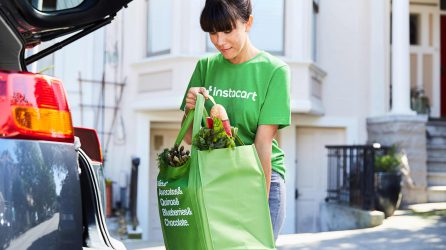How CPGs can optimize trade promotions and boost unit economics amid inflation

Presented by:
Jo Campbell — 2022
It’s one of the CPG industry’s worst-kept secrets: Brands waste a staggering amount of money on ineffective trade promotions every year.
An estimated $500 billion is spent on CPG trade promotions globally (some put the figure as high as $1 trillion), and a big chunk of this delivers virtually zero results. As I recently shared on the FMCG Guys podcast, received industry wisdom suggests between 35 and 40% of trade promotion spend is wasted.
At e.fundamentals, we regularly uncover huge inefficiencies when analyzing the performance of trade promotions and online media spend for brand owners. Working with a client we recently discovered their e-retail media banners had been activated not just in the main category and relevant adjacent categories, but also randomly in skincare and baby wipes; not a strategic focus for driving cross sell.
This level of waste is problematic at the best of times, but it is completely unsustainable in the current climate.
CPGs face a perfect storm of cost pressures right now. Whether it’s oil, gas, grain, vegetable oils, fertilizer, or labor, prices are soaring everywhere. With retailers resistant to increasing consumer prices, CPGs are urgently looking for ways to improve the unit economics of their business whilst continuing to drive value for shoppers and not a trade war with their retail partners.
Trade promotions and retail media spend are rich hunting grounds for inefficiencies, but simply pulling spend is rarely an option. One of the key lessons of the 2008 recession was the importance of maintaining ad spending during tough economic times. As cash-strapped consumers become more deal-conscious and trade down to private label, brands need to maintain a healthy level of awareness to stay relevant and communicate their value. But they also need to be smart about how and where they spend their cash.
So, how can CPGs use strategic revenue management to get the most out of their trade spend? And how can digital shelf analytics help?
Are you getting what you’re paying for?
The first question we look at when working with CPGs on trade spend optimization is simple: Are you getting what you’re paying for?
Unless they have a centralized way of tracking promotions and e-retail media, it’s hard for brands to verify conclusively if retailers have executed the campaigns they’ve paid for.
There’s a whole cottage industry around manually tracking whether promotions and online marketing campaigns are actually happening (back in my own CPG days, we used our admin team to go into retailer websites every week to track promotions and banners and enter them in our system), but a manual system simply can’t provide the right insights at speed and scale.
That’s why more and more CPGs are using digital shelf analytics for this purpose. A tool like our Winning Campaigns fundamental gathers full category data daily visualized into a simple event calendar which makes it quick and easy to see whether retailers are delivering what they are supposed to. It’s rare to get money back if there’s a problem, but brands can potentially negotiate free support for future campaigns as compensation.
Next, we use our digital shelf analytics to help CPGs assess the performance of their promotional campaigns versus their competitors’. This often highlights significant opportunities to drive a more profitable promotional mix. For example, there could be scope to reduce the depth of deal, pare back the number of weeks or promote a more profitable sku without compromising results.
It’s all about finding the pockets of spend that can be optimized without causing consumers to turn away from a particular brand or retailers to stop supporting a particular supplier. An experienced digital shelf analytics provider will make a big difference here – with over 150 years of CPG experience at the coal face, we help CPGs with strategic revenue management all the time, knowing exactly where to look for inefficiencies and have a full library of use cases and examples for optimizing trade promotions.
Connecting the dots between different KPIs and availability
Once the easy wins on trade promotion optimization have been realized, the next area to focus on is the inter-relationships between different key performance indicators (KPIs).
Brands will often run sponsored search placement in addition to a retailer advert in addition to a promotion, but they have little visibility on how these impact their performance. Do they really need all three for optimum results – or could they achieve the same or similar results by running just one or two of the three? There are big potential cost savings to be had here.
The other key area to look at is the interplay between brand activations and availability.
One of the biggest mistakes we see CPGs make on the digital shelf is putting an item on promotion, boosting it with a paid search placement (and potentially some retail media as well), and it drives an out-of-stock that puts a competitor product in the shopper’s basket and in their favorites. Needless to say, trade spend that not only fails to generate sales but also drives business toward rivals is a waste of time and money. Having the full set of analytics to spot this interplay is critical, and where an accurate and full-category data set is invaluable.
Many CPGs will also be looking for opportunities to take strategic pricing as part of their revenue management efforts. By combining digital shelf analytics with EPOS data, they can work out the price elasticity of different items and track market reactions to any changes in pricing strategy. Plus, they can see to what extent price changes affect retailers’ algorithms and impact on their search performance.
An integrated approach to strategic revenue management
In all this, the single biggest gap we see is the lack of an integrated approach to strategic revenue management. Digital shelf analytics can flag up lots of opportunities for optimizing trade spend and improving unit economics but acting on them requires joint-up thinking.
The users of our system are typically eCommerce, category, and sales teams, but few CPGs currently encourage revenue management teams to make use of the data we provide. As a result, revenue management teams have only part of the picture.
As is so often the case in eCommerce, the biggest opportunity is not having more data – it’s making sure the right people have access to the right data to help them drive the right strategies and choices. With cost pressures only expected to grow, now’s the time for CPGs to empower their revenue management teams with data and insights from digital shelf analytics.
All the digital Shelf Analytics You Need to Succeed at Speed & Scale
See why world leading brands choose e.fundamentals for actionable digital shelf insights
Request A demoLatest Resources

CommerceIQ Launches Global Retail Ecommerce Management Platform Combining Sales, Supply Chain, Retail Media, and Digital Shelf with e.fundamentals Acquisition
Ecommerce platform enables consumer brands to grow market share profitably in today’s inflationary and supply-constrained environment through intelligent automation, supporting over 450 omnichannel retailers in 41 countries.

e.fundamentals becomes a CommerceIQ company
e.fundamentals has been acquired by CommerceIQ, the leading Retail Ecommerce Management Platform, headquartered in Palo Alto, California. Consumer brands can now harness one global software platform to power profitable market share growth across all major retailers.

5 strategic pricing opportunities CPGs should focus on now
As tensions run high between retailers and suppliers, CPGs need to be smarter than ever about strategic pricing. Here’s how to use digital shelf analytics to hold your own in tough negotiations.

What the smartest CPGs get right about selling on Instacart
This post has been updated and was originally published March 30, 2021. It's time CPGs get ready to win on Instacart. So read and learn: What's all the hype around…

5 optimization tactics to grow digital shelf sales
This post has been updated and was originally published May 14, 2020. Consumer goods companies (CPG) continue to grapple with enormous shifts to the industry as the eCommerce boom continues…

5 tactics to grow online sales for category managers
Category management has changed. We've highlighted the 5 tactics to help you scale your growth on the digital shelf at speed.
View Our Most Popular resources to help you learn and win on the digital shelf.

The Ultimate Guide to Content Management on the Digital Shelf

The Digital Shelf Cast - Listen to our latest episode






